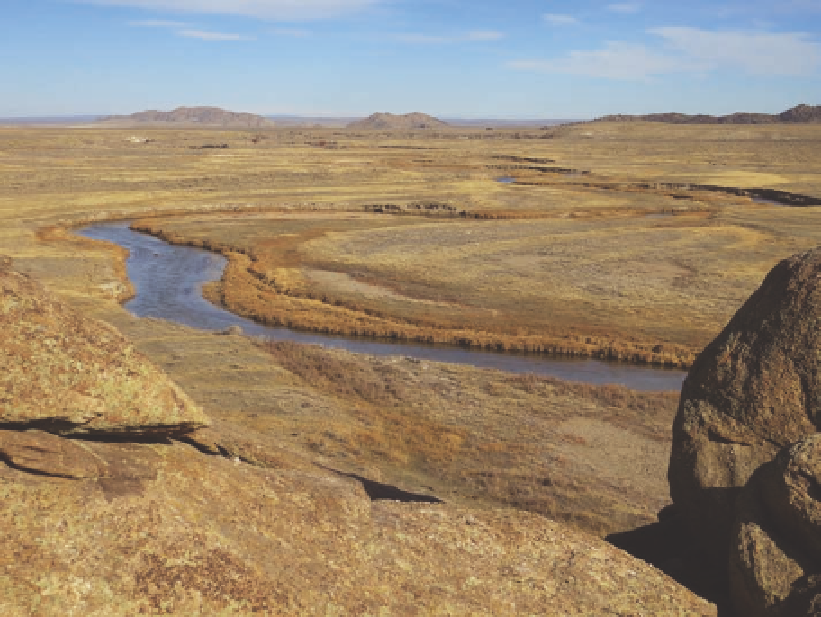Geoscience Reference
In-Depth Information
Fig. 4.10. the Sweetwater River, looking northeast from inde-
pendence Rock in 2013. note the lack of trees and shrubs, just
as in 1870, when a similar photo was taken by William Henry
Jackson (U.S. Geological Survery photo 284; see K. L. Johnson
1987). common plants include alkali sacaton, fringed sagewort,
American licorice, plains silver sagebrush, and rubber rabbit-
brush. note the elongated, well-vegetated point bar. elevation of
the river is approximately 5,800 feet.
and a variety of forbs and grasses. Abrupt transitions
from woodland to shrubland, together with abundant
evidence of fire-scarred trees and logs, suggest that
fire has played an important role in converting older
woodlands to shrublands. cattail marshes occur in
flooded oxbows, and meadows are found nearby, such as
in recently abandoned channels.
ian zones grow rapidly during spring and early sum-
mer, providing an abundance of highly flammable fuel
by late summer. Shrublands dominated by skunkbush
sumac often replace the woodlands that are burned.
Another important factor causing rapid change is
flood control. Along the Bighorn River, Akashi found
evidence of much less channel shifting after the
enlargement of Boysen Reservoir in 1952. consequently,
fewer and smaller point bars were formed, resulting
in fewer sites for the establishment of cottonwood
old age, fire, beaver cutting, agricultural clearing, and
increasing depth to the water table. thus, the land area
in old-growth cottonwood woodlands declined, a trend
has led to changes in some mountain forests, flood
suppression has changed the riparian zone.
15
notably, the shifting mosaic along the meander-
ing Bighorn River is different from that on the nearby
Shoshone River, a more rapid, braided river. cotton-
Shifting Riparian Mosaics
the mosaic of some riparian zones is relatively stable,
because the creek or river is at the bottom of a V-shaped
valley incised in bedrock. in contrast, riparian mosaics
on the alluvial soils of broad floodplains change rapidly
(see figs. 4.8 and 4.11). comparing a series of aerial
photographs taken over the Bighorn River, University
of Wyoming graduate student Yoshiko Akashi found
that some of the woodlands, shrublands, and meadows
a major factor causing the change. Plants in the ripar-

Search WWH ::

Custom Search